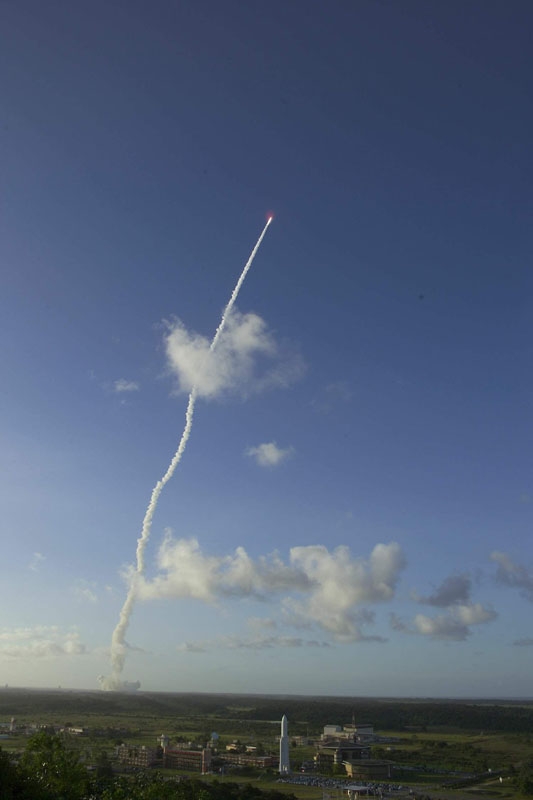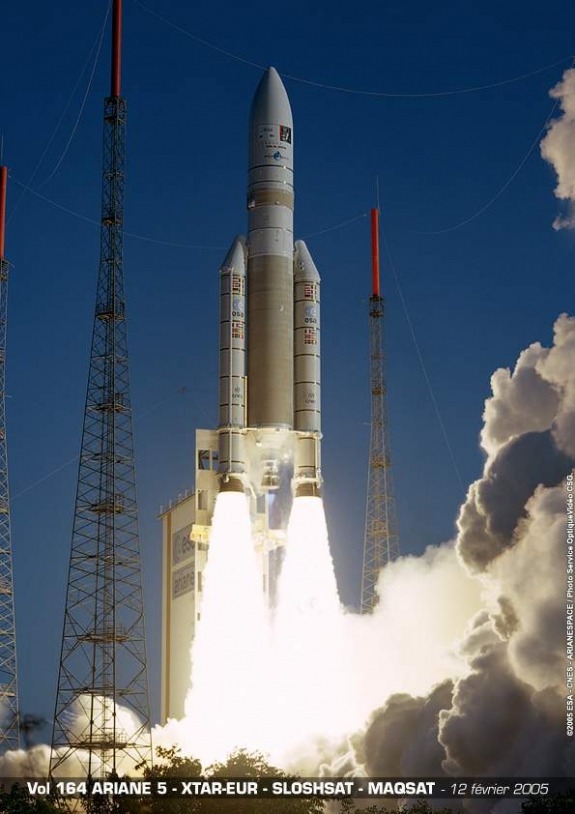14 February 2005
The reward for over 2 years of effort
Saturday evening, the tension was plain to see on the faces of teams at the Guiana Space Centre and the Launch Vehicles Directorate in Evry, France. Their nervousness was understandable, given that since Ariane 5 ECA’s aborted maiden flight, the entire European space community and especially the contractors working on the programme had mobilized their resources to return the launcher to flight.
This success is the culmination of more than 2 years of effort, involving 20,000 seconds of firing tests on the Vulcain 2 engine implicated in the previous launch failure, a series of corrective actions and a launch campaign of more than 120 days at the Guiana Space Centre, consisting of 4,000 operations since last August.
This success is the culmination of more than 2 years of effort, involving 20,000 seconds of firing tests on the Vulcain 2 engine implicated in the previous launch failure, a series of corrective actions and a launch campaign of more than 120 days at the Guiana Space Centre, consisting of 4,000 operations since last August.

After a short delay due to a problem interpreting pressure sensor readings, Ariane ascended into the sky over French Guiana. Powered by 20% more thrust at lift-off, Ariane 5 ECA’s impressive climb was visible until separation of its EAP solid boosters at an altitude of 69 km.
Ariane 5 ECA will now be operated by Arianespace, with CNES responsible for maintaining the launcher’s certification and qualification throughout its operating lifetime.
In memory of Hubert Curien
“This success confirms Ariane 5’s technical and operational maturity. […] It is a fantastic achievement for Europe, for France and for CNES,” said Yannick d’Escatha, congratulating teams at the Guiana Space Centre CNES’s Launch Vehicles Directorate.

Hubert Curien, CNES’s President from 1976 to 1984 who witnessed the very first Ariane launch in 1979, died only days before this latest landmark event. “On behalf of the European and French space community, I would like to dedicate this success to him,” said Yannick d’Escatha. “He was one of the chief motivators at the start of the Ariane adventure that has written a new page in its history today.”
More about...
Ariane 5, Europe's launcher
for the third millennium
Ariane 1 to 4, the saga of the Ariane launcher
Ariane 1 to 4, the saga of the Ariane launcher
Related links
Ariane 5 ECA readies for eagerly awaited return to flight
Previous news - 9 February 2005
Guiana Space center website
ESA website
Arianespace website
Previous news - 9 February 2005
Guiana Space center website
ESA website
Arianespace website
